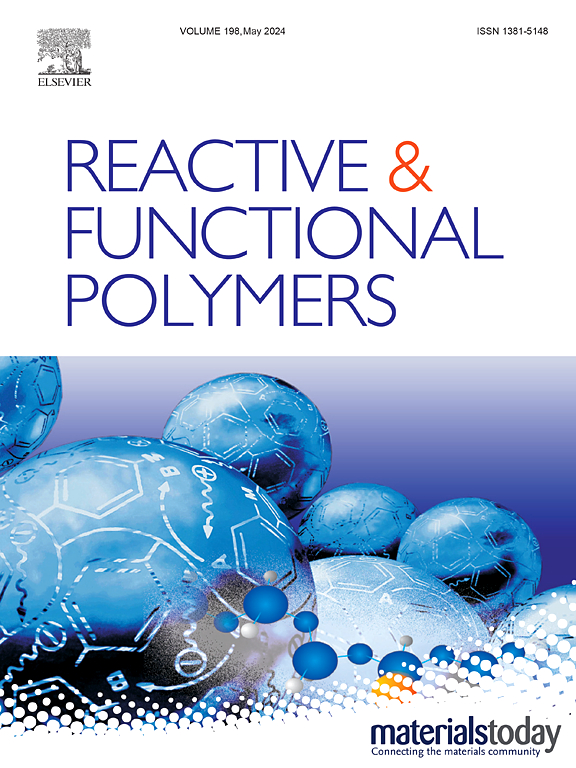Next-generation spectroscopic probe for alpha-amylase detection: Development of a potential biomarker for cancer
IF 5.1
3区 工程技术
Q1 CHEMISTRY, APPLIED
引用次数: 0
Abstract
A novel spectroscopic probe based on a barbituric acid-starch (ST-BA) derivative is synthesized and used to assess the alpha-amylase activity. This derivative and its precursors are characterized by UV–Visible, fluorescence, FTIR, and 1H NMR spectroscopy. Luminescent ST-BA core contains a double bond conjugated to pyrimidine ring carbonyl groups, yielding a notable UV–Visible absorption and fluorescence emission. Enzymatic ST-BA cleavage reveals a kinetics slower than for pristine starch, inducing new supramolecular structures with an enhanced fluorescence quantum yield. Force field minimization also supports the contribution of intra and intermolecular interactions to ST-BA oligomer rigidification, a singularity in agreement with aggregation-induced emission. However, the decrease of UV–Visible signal reveals the chromophore competition for the photon after oligomer self-assembly. The linear spectroscopic responses support to ST-BA as a successful enzymatic activity sensor. Although these findings emphasize the ST-BA potential for qualitative enzyme analysis, further experimental condition studies are essential for accurate quantification.

用于α -淀粉酶检测的下一代光谱探针:一种潜在的癌症生物标志物的发展
合成了一种基于巴比妥酸-淀粉(ST-BA)衍生物的新型光谱探针,并用于评价α -淀粉酶活性。该衍生物及其前驱体通过紫外可见光谱、荧光光谱、红外光谱和核磁共振氢谱进行了表征。发光ST-BA核心包含一个与嘧啶环羰基共轭的双键,产生显著的紫外可见吸收和荧光发射。酶促ST-BA裂解的动力学比原始淀粉慢,诱导新的超分子结构,荧光量子产率增强。力场最小化也支持分子内和分子间相互作用对ST-BA低聚物固化的贡献,这是与聚集诱导发射一致的奇点。然而,紫外可见信号的减弱揭示了低聚体自组装后对光子的生色团竞争。线性光谱响应支持ST-BA作为一个成功的酶活性传感器。虽然这些发现强调了ST-BA定性酶分析的潜力,但进一步的实验条件研究是准确定量的必要条件。
本文章由计算机程序翻译,如有差异,请以英文原文为准。
求助全文
约1分钟内获得全文
求助全文
来源期刊

Reactive & Functional Polymers
工程技术-高分子科学
CiteScore
8.90
自引率
5.90%
发文量
259
审稿时长
27 days
期刊介绍:
Reactive & Functional Polymers provides a forum to disseminate original ideas, concepts and developments in the science and technology of polymers with functional groups, which impart specific chemical reactivity or physical, chemical, structural, biological, and pharmacological functionality. The scope covers organic polymers, acting for instance as reagents, catalysts, templates, ion-exchangers, selective sorbents, chelating or antimicrobial agents, drug carriers, sensors, membranes, and hydrogels. This also includes reactive cross-linkable prepolymers and high-performance thermosetting polymers, natural or degradable polymers, conducting polymers, and porous polymers.
Original research articles must contain thorough molecular and material characterization data on synthesis of the above polymers in combination with their applications. Applications include but are not limited to catalysis, water or effluent treatment, separations and recovery, electronics and information storage, energy conversion, encapsulation, or adhesion.
 求助内容:
求助内容: 应助结果提醒方式:
应助结果提醒方式:


